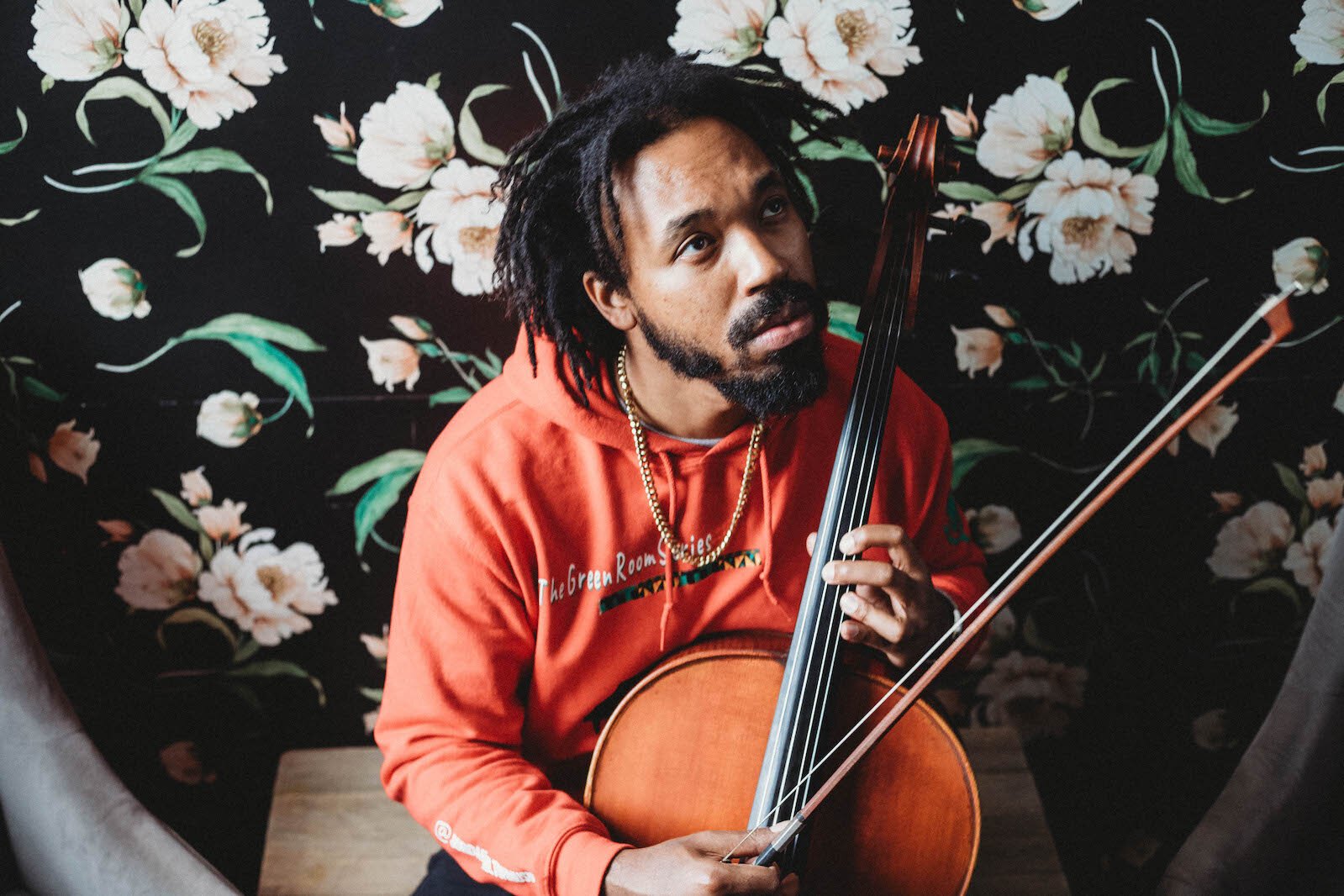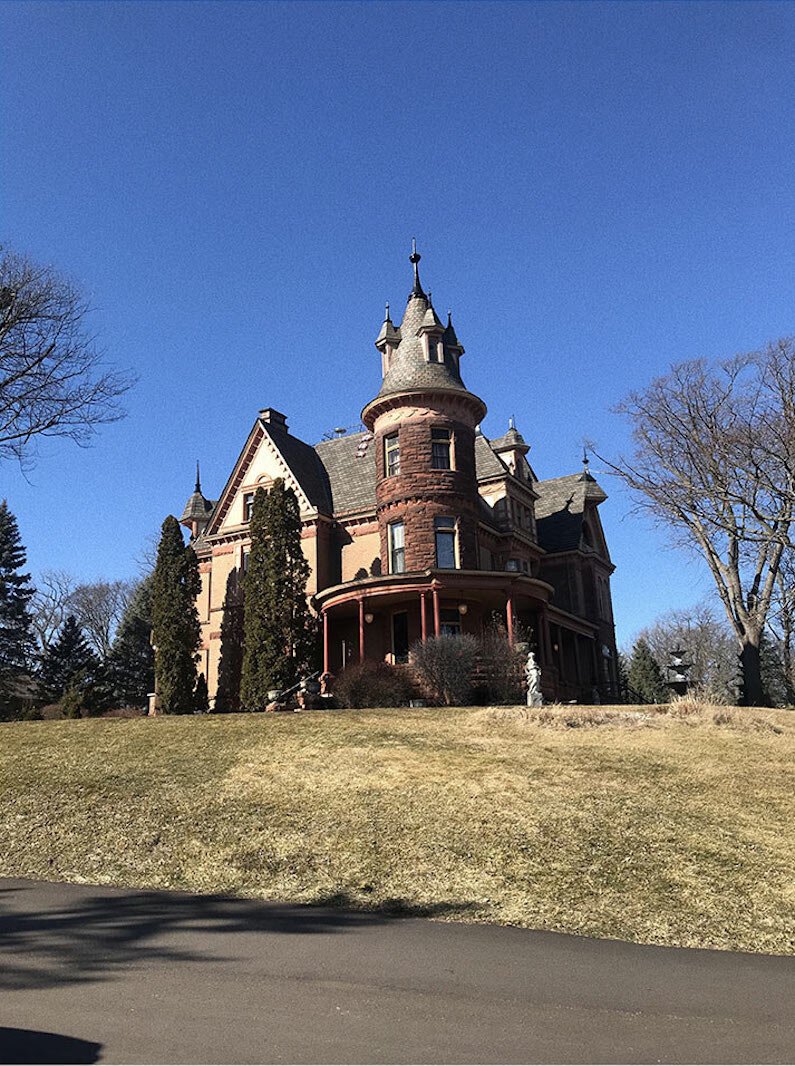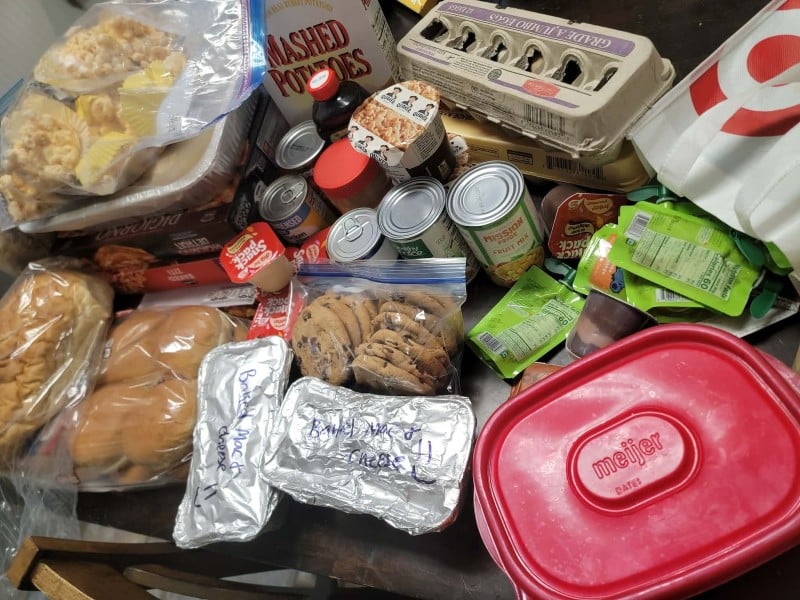Editor’s note: This story is part of Southwest Michigan Second Wave’s On the Ground Kalamazoo series.
Like some Kalamazoo neighborhood spots, natural places, cemeteries, etc., the Michigan Festival of Sacred Music’s Music in Place project has just been quietly existing, waiting for people to discover what’s special about it.
Right now, MFSM has its Connecting Chords Music Festival going at full steam, bringing a variety of live music to town this August through November.
But back in 2020-2021, the lingering pandemic kept live music from happening.
The nonprofit group was working to keep musicians playing. “We thought it’d be important to try to put money into the hands of musicians” who couldn’t make their usual income in live performances, Executive Director Elizabeth Start says.
They first launched the Resonance Project, enlisting local composers and musicians to create new music inspired by artwork at the Kalamazoo Institute of Arts.
As COVID persisted, they wanted a follow-up. “We thought it’d be a neat idea to have people celebrate Kalamazoo by writing a piece about a place that’s important to them,” Start says.
Composer/musicians were selected by “the board and our program committee, and we had gathered suggestions from area musicians we knew of, to find folks we didn’t yet know so well.”
Music In Place went online in May 2021. Start says there was no formal roll-out. Instead, the link was published in programs and shared on social media. “It’s been sort of a, ‘oh, by the way, come look at this.'”
Some pieces capture a moment in local history, like Helen Yee’s “Before the After.” Inspired by the Kalamazoo Farmers Market, it “was particularly poignant because it was closed down at the time,” Start says.
Others are evergreen, relevant as long as Kalamazoo exists. Standouts that come to Start’s mind are the “love song” about Riverside Cemetery by Megan Dooley, “Riverside,” and two differing pieces on the Stuart and Edison neighborhoods by Stratøs and Jordan Hamilton.
“People obviously were grabbing onto something that meant something to them, and finding a way to express that,” Start says.
Some of the Kalamazoo places and sounds:

Stratøs moved out to Los Angeles this summer, he says from his new home. Two things he knows he’s going to miss now that he’s out in the dry West are the Stuart Neighborhood and rain showers.
“Absolutely! It’s pretty dry out here, so far.”
Originally from Ann Arbor, he moved to Kalamazoo in 2014 to attend Western Michigan University. He earned his undergrad and master’s, then spent another two years here “when COVID happened,” he said.
It was during lockdown when he went for a walk in Stuart. A sprinkle turned into a shower. “I might’ve been under a tree or something, and the rain started to make this really cool rhythmic pattern… little melodic fragments start up really slowly and sparse, far apart… faster and faster, closer together.”

The result is a musical shower, with Stratøs on sax, Julia Moffa (vocals), Yakiv Tvietinskyi (trumpet), John Hébert (bass), and Madison George (drums).
With life limited by COVID, it was one of those moments of focus on the world close to home. “I was at home, just like everyone else, and did quite a bit of creating in the Stuart neighborhood. A lot of my recent work was made there, so it has a special place in my heart,” he says.

Jordan Hamilton’s piece got its inspiration from a mural on Howard’s Party Store in the Edison Neighborhood.
He took a photo of it at night, lit under harsh lamps. The mural, by Bonus Saves, shows Washington Square on Portage Street near Stockbridge Avenue in the 1940s, the road lined with vibrant life and businesses.
Hamilton was not inspired to create a lively retro piece from the scene. There’s a tension between the past in the mural and the present. His “Stockbridge” is slow, ominous, surreal. Loops and samples, voices and instruments going backwards, and forwards, capture “the energy of change” surrounding the mural, according to his notes. “Stockbridge” was also co-arranged by drummer Terrance Smith and keyboardist Grayson Nye.
Kalamazoo is at a “turning point,” Hamilton says. But he is not sure if he should have hope or fear.

Washington Square has been undergoing revitalization — he points out that there are new Black-owned businesses there, but he also worries about gentrification.
If the neighborhood improves, housing costs could go up and people may be priced out of their homes, he suspects. “They’re not going to have a choice. But does that mean you don’t try to improve the area? Where’s the line?”
There are places in Kalamazoo that have meaning to him, or beauty — one can point and say “hey, this is a nice little nature spot, or hey, this is a nice downtown — oh yeah, Bell’s Brewery!”
The mural, set in the past, brings to his mind Kalamazoo’s history of segregational redlining. “You can really see the lines,” he says. “At the same time, Bells Brewery is on the Northside, and they don’t have any customers from the Northside coming in there. Mostly people from all the way down Portage coming from Pfizer or Stryker.”
He suspects that downtown improvements are “for all those young people they’re trying to attract to work for Pfizer or Stryker….. That’s what they do, that’s business.”
“That area (Edison) is Kalamazoo,” Hamilton says. “The parts that make Kalamazoo are the parts that are mostly neglected by the downtown community. “

Another focus on Kalamazoo’s water from someone out of the dry West, Andrew Saliba’s piece features gently burbling guitar-work inspired by the Kalamazoo River Valley Trail section from D Avenue to East Mosel Avenue.
Saliba grew up in San Diego, and recently moved back. To him “abundant free-flowing water in Michigan is a shocking thing to someone who grew up in a desert,” he wrote in his notes.

He says from San Diego, “the desert is beautiful as well. But there is something to the overwhelming vibrance and lushness of someplace that’s so rich in water. It’s beautiful.”
In choosing a place, he thought of some personal locations: Western Michigan University where he was a student, K College where he taught, and the recording studio La Luna where he’s spent a lot of time creating music.
During the pandemic, he would walk that section of trail along the river, enjoying the peace, the trees, the flowing water. “That’s about as good as it gets. It’s a jewel of what I think Kalamazoo has to offer its community…. The love of nature, solitude, the natural environment to just be in,” he says.
With reverb and arpeggiation, he worked to recreate “the burbles” on guitar.
“Being enveloped by the sounds in an area, I love that. I love being someplace and hearing bird calls, hearing leaves rustling, and the nice thing about the Kalamazoo River, and the Kalamazoo River Valley Trail is the water itself. I love the sounds of streams and creeks and rivers.”

With Elizabeth Start on cello and Susan B. Anthony singing soprano, Start’s “Stetson Chapel Bells” sounds like it’s coming from a sacred space, a personal sacred space for Start.
“I have so many memories attached to that place,” Start says. A lot of her life as a musician took place in the chapel. She attended many weddings there. “Lots of people I’ve known have had their memorial services there.”
When she started the “Music In Place” project, she didn’t think she’d be one of the musicians or composers. “The board voted to include me, unbeknownst to me.”
She was happy to look at her life with Kalamazoo College to find inspiration. “My father taught at K College, I grew up three blocks from there, had run all over the campus as a faculty brat back in the day. And my sister was married there. I went to K College for a year myself.”

In that freshmen year she majored in math and found herself in a math class change ringing — bell ringing in accordance to mathematical rules — a class led by T.J. “Jeff” Smith.
Start left to attend Oberlin where she studied music. When she returned seven years later, she’d found that Smith had led a successful campaign to install change ringing bells in the chapel tower.
She was disappointed that she’d missed the bell festivities. “I felt really left out,” she says.
Writing the piece was a way to revisit that time she’d missed.
For the text, “I just knew there had to be a poem somewhere,” Start says. She discovered one framed on Smith’s wife’s wall, Conrad Hilberry’s ‘For Jeff Smith, June 1984.”
“Hearing you speak of bells, we hear the bells speak,” Hilberry wrote.
Start remembers delivering newspapers as a kid to both Smith’s and Hilberry’s homes. The poem brought in the sense of community in the piece.
Start spends her time between Illinois and Kalamazoo. When she sees the tower and hears the bells, “It’s been this thing that tells me I’m near home.”
When Yee decided to do a piece on the Kalamazoo Farmers Market on Bank Street, she was hoping to capture its liveliness as a center of the community.
But she visited in early 2021 and found it empty. A 2020 of COVID protocols had tamped down the liveliness that year, and then the market site was closed in 2021 for its remake.
“I expected to be writing a completely different kind of piece, but when I went there to the site, that’s what I saw and that’s what I had to write.”
“Before the After” is tango-inspired, with Yee on violin, Ted Hogarth on baritone saxophone. Erin Malley and Doruk Golcu, tango dancers, are featured in a film Yee and Malley collaborated on. They dance slowly in a tango of connection and separation over scenes of an empty market.
“There was this poignant thing where being together is taken away from you,” Yee says.
The piece and the film capture a specific moment in recent history. “At that moment I was hoping for the after, looking forward to whatever, the new season of the Farmers Market would be, and also post-COVID life.”
For Yee the market has always been “very much like a center of Kalamazoo life, where you get all sorts of people,” she says. “It felt like a true center because everybody can go there…. You always run into somebody you know there and it winds up being social as well.”
If she had to update the piece, now that the new market is back to life, what would it sound like?
She laughs. “I don’t think it would be a tango anymore.” It would be “a lot more energetic piece, and feel more celebratory.”




















